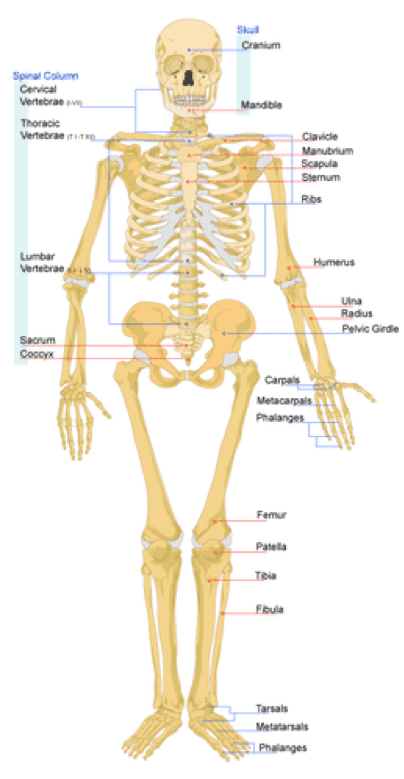There are three types of specialized cells in human bones: osteoblasts, osteocytes, and osteoclasts. These cells are responsible for bone growth and mineral homeostasis. Osteoblasts make new bone cells and secrete collagen that mineralizes to become bone matrix. They are responsible for bone growth and the uptake of minerals from the blood. Osteocytes regulate mineral homeostasis. They direct the uptake of minerals from the blood and the release of minerals back into the blood as needed. Osteoclasts dissolve minerals in bone matrix and release them back into the blood.
Bones are far from static, or unchanging. Instead, they are dynamic, living tissues that are constantly being reshaped. Under the direction of osteocytes, osteoblasts continuously build up bone, while osteoclasts continuously break it down.

Diagram of human skeletal system